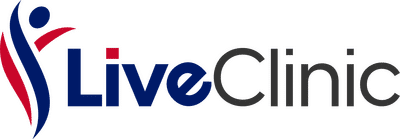Dietary Changes
Dietary changes are a crucial aspect of achieving and maintaining a healthy lifestyle. What we eat can have a significant impact on our overall health, including our weight, energy levels, and risk of developing chronic diseases.
One of the most important dietary changes that can lead to improved health is reducing the intake of processed foods and increasing the consumption of whole, nutrient-dense foods such as fruits, vegetables, whole grains, lean proteins, and healthy fats. These foods provide essential vitamins, minerals, and antioxidants that support overall health and well-being.
In addition to focusing on the types of foods we eat, it’s also important to pay attention to portion sizes and practice mindful eating. By being more conscious of our eating habits and listening to our body’s hunger and fullness cues, we can avoid overeating and better manage our weight.
Exercise Programs
When it comes to achieving and maintaining a healthy lifestyle, **exercise programs** are a crucial component. Regular physical activity has numerous benefits for both physical and mental health, and can help to prevent a wide range of chronic conditions such as obesity, heart disease, and diabetes. There are many different types of exercise programs, each with its own set of advantages and potential drawbacks. By understanding the options available, individuals can select the program that is best suited to their needs and goals.
One popular type of exercise program is aerobic exercise, which focuses on improving cardiovascular fitness. This can include activities such as running, swimming, cycling, and dancing. Aerobic exercise helps to strengthen the heart and lungs, improve circulation, and boost overall endurance. Another important component of a well-rounded exercise program is strength training. This can involve lifting weights, using resistance bands, or performing bodyweight exercises, and is essential for building and maintaining muscle mass, bone density, and overall strength. Flexibility and balance exercises, such as yoga and tai chi, are also important for preventing injuries and maintaining mobility as we age.
In addition to these traditional exercise programs, there are also a variety of specialized options designed to meet the specific needs of different individuals. For example, high-intensity interval training (HIIT) involves short bursts of intense exercise followed by brief recovery periods, and has been shown to be particularly effective for fat loss and improving cardiovascular health. Cross-training programs combine different types of exercises to prevent boredom and reduce the risk of overuse injuries. There are also programs tailored for specific populations, such as seniors, pregnant women, and individuals with chronic conditions or disabilities.
Behavioral Therapy
Behavioral therapy, also known as behavior modification, is a type of psychotherapy that focuses on changing unhealthy or maladaptive behaviors. This approach is based on the idea that behavior is learned and can therefore be unlearned or modified. Behavioral therapy is often used to treat a variety of mental health conditions, including anxiety, depression, phobias, and obsessive-compulsive disorder, among others.
One of the key components of behavioral therapy is identifying and understanding the behaviors that are causing distress or impairment. This may involve keeping a diary of thoughts, feelings, and behaviors, as well as identifying triggers that lead to problematic behavior. Once these patterns are recognized, the therapist and client work together to develop strategies for changing these behaviors and replacing them with healthier, more adaptive ones.
Behavioral therapy may also involve techniques such as relaxation training, assertiveness training, and social skills training, among others. These techniques are designed to help individuals better cope with stress, manage their emotions, and improve their relationships. Overall, behavioral therapy is a highly structured, focused, and goal-oriented approach that can be highly effective in helping individuals make lasting changes in their behavior and improve their overall well-being.
Pharmacotherapy Options
Pharmacotherapy, also known as medication therapy, is a treatment option for individuals who are struggling with weight management. It involves the use of prescription medications to help control appetite, increase metabolism, or decrease the absorption of fat in the body. These medications are typically used in conjunction with a healthy diet and regular exercise program to achieve the best results. It’s important to note that pharmacotherapy options are generally only recommended for individuals who have not been successful with other weight loss methods and have a body mass index (BMI) of 30 or higher.
There are several different types of pharmacotherapy options available, each targeting different aspects of weight management. Some medications work by suppressing appetite, making it easier for individuals to stick to a calorie-controlled diet. Others work by blocking the absorption of fat or increasing the body’s metabolism to help burn more calories. It’s important to consult with a healthcare professional to determine the most suitable medication for individual needs and to discuss the potential side effects and risks associated with each option. Pharmacotherapy should only be taken under the guidance of a healthcare provider.
| Medication Name | Function | Potential Side Effects |
|---|---|---|
| Orlistat (Xenical) | Blocks the absorption of fat in the body | Gas, oily spotting, diarrhea |
| Phentermine/topiramate (Qsymia) | Suppresses appetite and increases metabolism | Increased heart rate, insomnia, constipation |
| Liraglutide (Saxenda) | Regulates appetite and blood sugar levels | Nausea, diarrhea, low blood sugar |
In conclusion, pharmacotherapy options can be an effective tool for individuals struggling with weight management when used in combination with a healthy lifestyle. However, it’s important to carefully consider the potential risks and benefits and work closely with a healthcare professional to determine the most suitable treatment plan. Pharmacotherapy should be viewed as a complement to dietary changes and exercise programs, rather than a standalone solution for weight loss.
Bariatric Surgery
Bariatric surgery is a weight loss option for people who are severely obese and have been unable to lose weight through other means such as diet and exercise. This type of surgery involves making changes to the digestive system to help people lose weight. There are several different types of bariatric surgery, including gastric bypass, gastric sleeve, and gastric banding. Each type of surgery has its own benefits and risks, and it’s important to talk to a doctor to determine which option is best for you.
One of the main benefits of bariatric surgery is that it can lead to significant and long-lasting weight loss. This can help reduce the risk of obesity-related health problems, such as type 2 diabetes, high blood pressure, and sleep apnea. In addition to weight loss, bariatric surgery can also improve quality of life by increasing mobility and reducing the need for medications to treat obesity-related health problems.
However, it’s important to keep in mind that bariatric surgery is not a quick fix for weight loss. It requires significant lifestyle changes, including a commitment to healthy eating and regular exercise, in order to be successful. Additionally, there are potential risks and complications associated with bariatric surgery, so it’s important to thoroughly research the procedure and discuss it with a healthcare provider before making a decision.
Complementary And Alternative Medicine
Complementary and alternative medicine, often referred to as CAM, is a diverse set of medical and health care systems, practices, and products that are not considered part of conventional medicine. Many people turn to CAM for various reasons, including to improve their overall well-being, to address a specific health issue, or simply because they prefer a more holistic approach to health care. It’s important to note that while CAM may be used alongside conventional medicine, it is not meant to replace it.
There are many different types of complementary and alternative medicine, including acupuncture, herbal remedies, meditation, yoga, chiropractic care, and massage therapy. Each type of CAM has its own unique approach and set of practices, and what works for one person may not work for another. It’s important for individuals to research and carefully consider their options before pursuing CAM treatments.
When considering CAM, it’s essential to consult with a healthcare professional to ensure that it is safe and appropriate for your individual needs and medical history. Additionally, it’s important to be aware that while some CAM practices have been found to be effective in certain cases, others may not have sufficient scientific evidence to support their use. As with any medical treatment, it’s crucial to approach CAM with a critical and discerning eye, and to always prioritize your safety and well-being.

